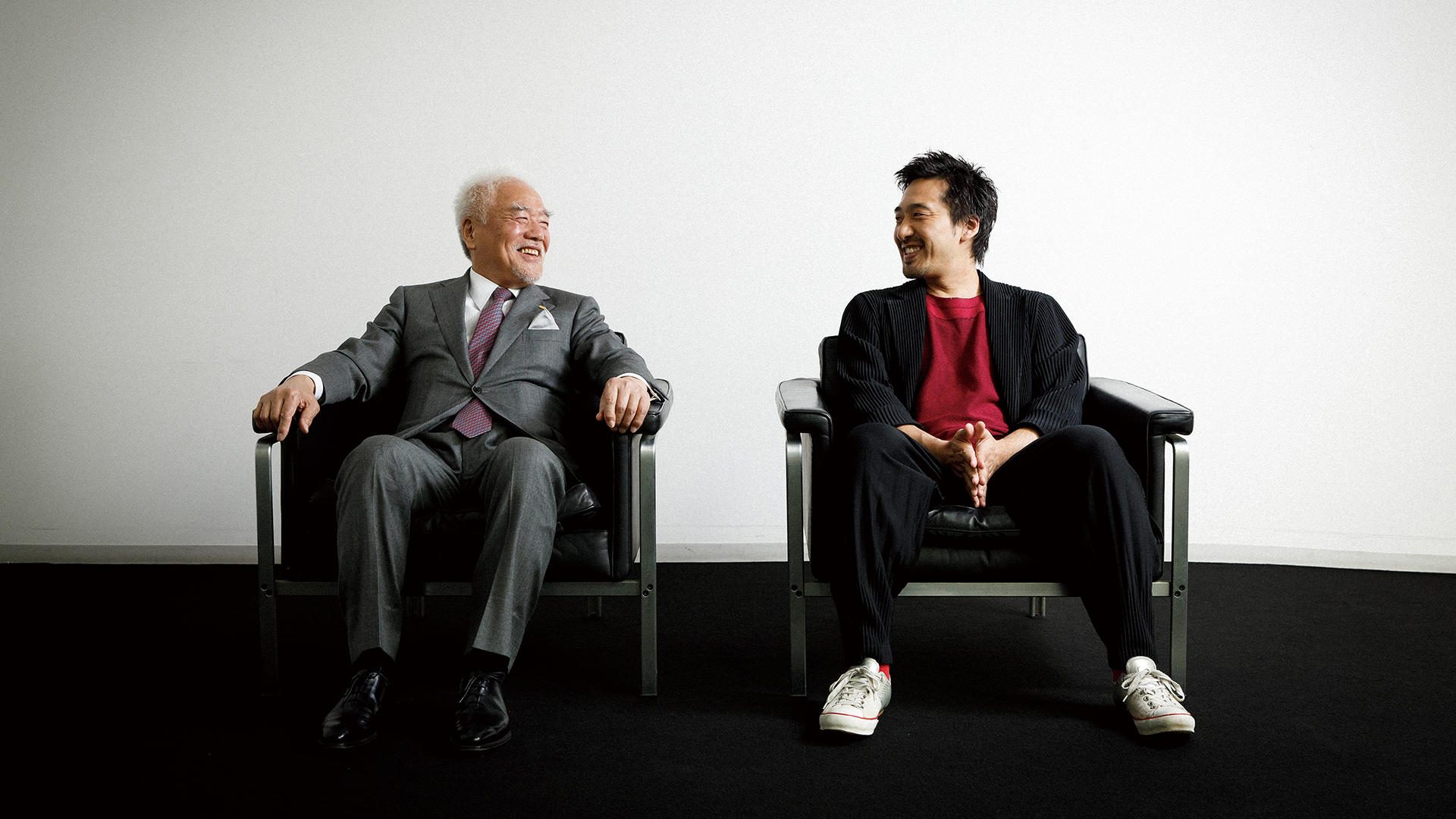
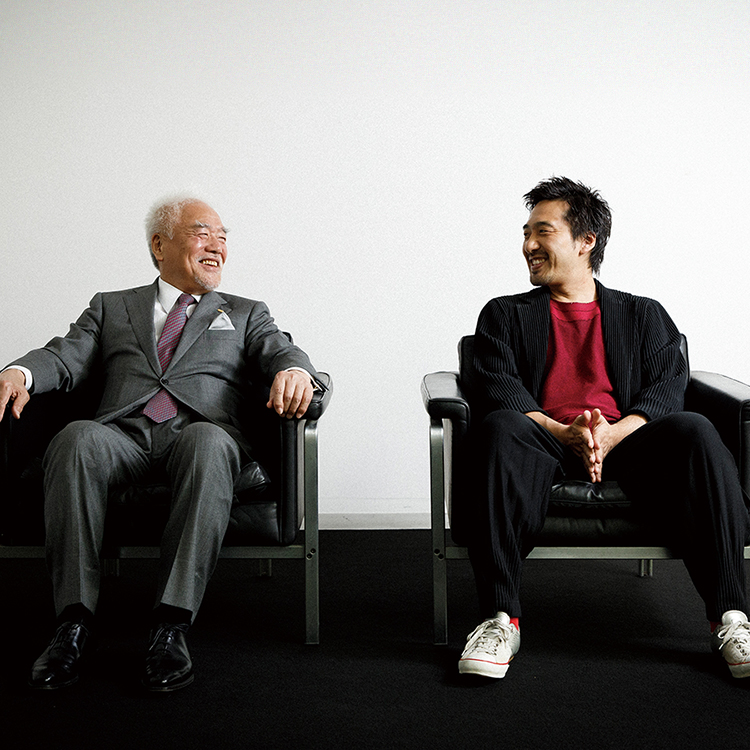


Junzo Tateno
CEO of UNION Corporation
Born in 1947, Junzo Tateno graduated from the Faculty of Law at Konan University (Kobe, Japan) in 1970
and entered Aoki Construction that same year. He joined UNION in 1973 and became CEO and President in 1990.
He serves as Chairman of the Union Foundation for Ergodesign Culture, a Public Interest Incorporated Foundation,
and the Osaka Industrial Bureau. He is also Vice Chairman of the Osaka Chamber of Commerce and Industry.
Tsuyoshi Tane
Paris-based Japanese architect
Tsuyoshi Tane is a Paris-based Japanese architect. He founded ATTA - Atelier Tsuyoshi Tane Architects in Paris in 2017 after being co-founder of DGT. Architects in 2006. Tsuyoshi believes in the idea of architecture belongs to a memory of place that connects its past to the future as his concept - "Archaeology of the Future." Tsuyoshi has received numerous awards, including Chevalier de I' ordre des Arts et des Lettres (FR, 2022) or the 67th Mainichi Design Awards 2021. www.at-ta.fr
3
TATENO
I would like to hear a little bit about the “ancient tomb" theme you used for your National Stadium design, including your thoughts behind it and why you chose that particular concept.
TANE
Sure. For the 2020 Olympics in Japan, the planning team chaired by Tadao Ando was looking for someone to create a uniquely Japanese 21st-century stadium. It was an amazing opportunity. However, the competition was not open to all architects. In fact, the entry requirements were unprecedentedlly strict: you had to have won a world-renowed prize in architecture equivalent to a Pritzker or an AIA Gold Medal. But I used to play soccer, and to soccer players the national stadium is almost sacred ground, so I knew there was no way I was giving up on this bid. *Laughs.* I actually found a loophole in the rules saying I could apply if I had designed a stadium for at least 15,000 people. Of course, I had no experience with a project like that either, but I contacted four French architectural firms that had. Since time was of the essence, I came up with my concept first and took it to them saying "I want to create this, let's collaborate and submit together!" And, somewhat reluctantly, one said yes and that was that!
TATENO
Wow! *Laughs.*
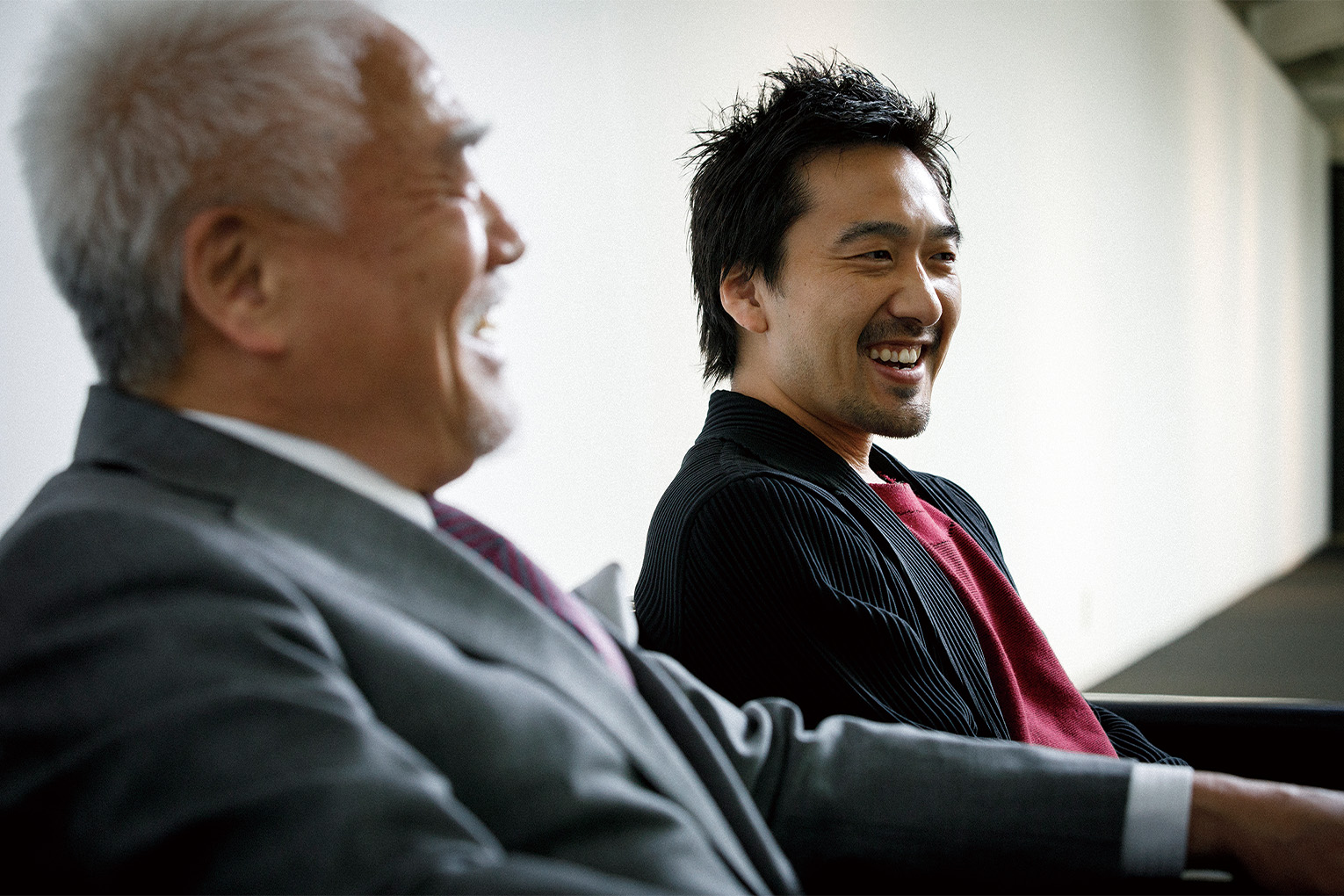
TANE
For the 1960 Tokyo Olympics, they built a really great stadium near Meiji shrine. It had this sort of leisurely Japanese calm that really relaxed spectators. When they decided to demolish that stadium to create a new one, on a personal level, I wanted the new structure to inherit some of the memories and legacy of the original. I knew that if we didn't carefully examine the history behind the land and build something meaningful it would end up forgotten and torn down in another 50 years, and I wanted something better than that.
TATENO
I see.
TANE
The Meiji shrine is an amazing place. It's a holy site with extensive inner gardens and many layers of history. But somehow the area surrounding the shrine became a center for corporate headquarters; it's now a patchwork of random buildings. So I thought that rather than just creating a stadium I wanted to build a piece of architecture with some continuity with the inner gardens of the Meiji shrine. And the concept also needed to touch on the significance of building right in the heart of Tokyo, as well as to display Japan to the world at the Olympics. So with all that in mind I started to think about what the largest structures in ancient Japan were, and I remembered the kofun, or ancient funerary mounds: gigantic tombs from prehistoric Japan. So I decided I wanted to build an "ancient tomb" that stood like a Japanese pyramid at a scale the world had never seen, in celebration of the Olympics in Japan. Through prominence at the world's greatest festival, the kofun could become a symbol of Japan once again.
TATENO
That's a great concept.
TANE
Yeah, it got to the final round of selections and I started to think we might actually win. It was pretty exciting, but we started celebrating too soon, and in the end we didn't quite make the cut. *Laughs.*
TATENO
That's too bad. *Laughs.*
TATENO
What other projects have you been involved in overseas, and which ones are you most proud of?
TANE
My best work would have to be the Estonian National Museum. I was in London about 10 years ago when I entered my first international competition. It was for the national museum of Estonia, which is one of the three Baltic states. Somehow, out of nowhere, I won first prize.
TATENO
Every time I hear this story, I still think it's amazing. It's located on old airport land, isn’t it?
TANE
It’s a former Soviet Union military runway.
TATENO
Ah, a runway!
TANE
The project was to create a new museum near a Soviet-era military runway. Originally the military site itself wasn't designated for the project, but I came up with a plan that incorporated the runway itself. It was a little controversial, but I wanted to create something that accepted the negative parts of the country's history. I wanted to build on that past to create something positive for the future.
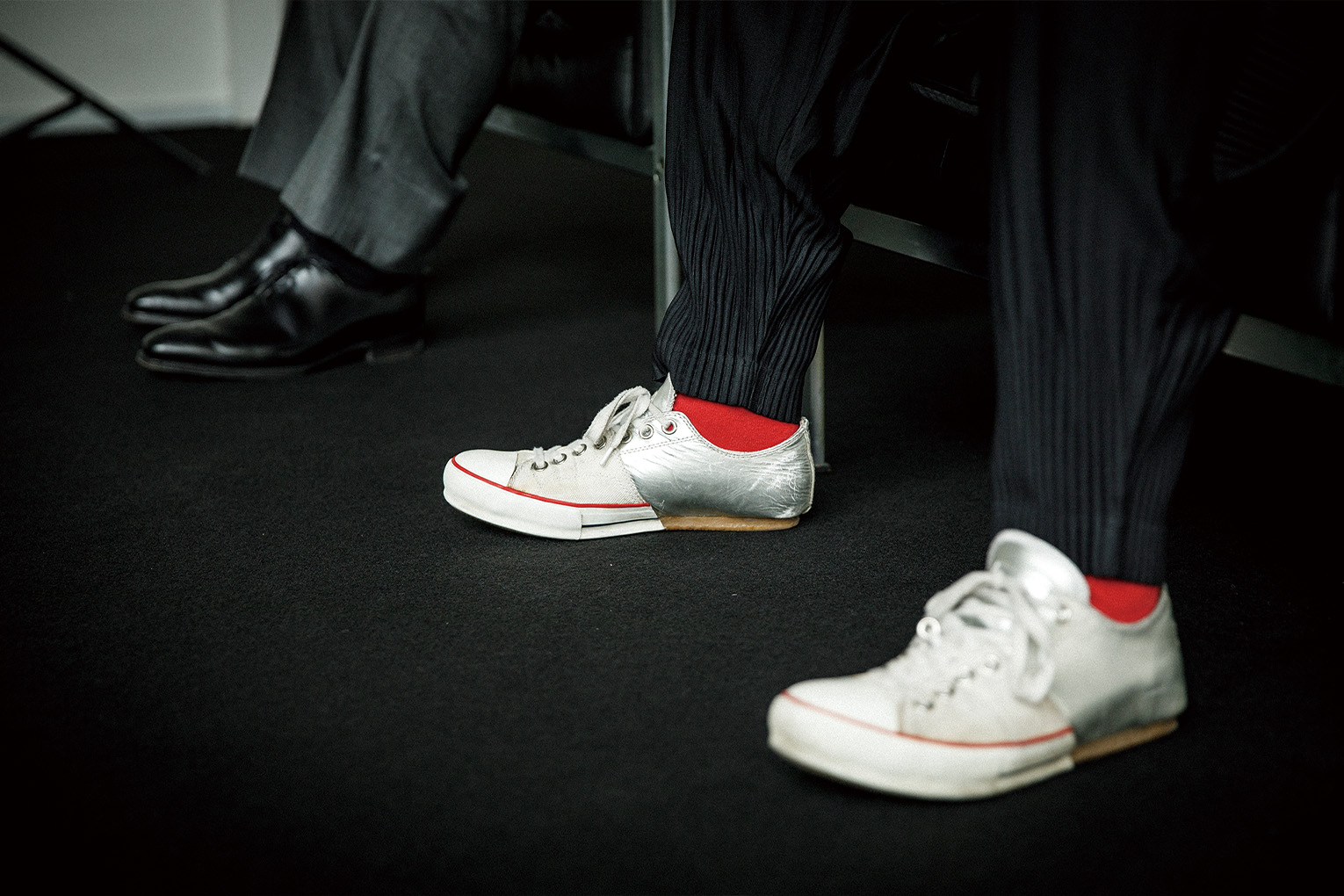
TATENO
I would love to go see it.
TANE
Oh, really? Please do. Even though I built it and know the building very well, I'm still impressed every time I visit the site. I find myself thinking, this architecture is amazing! *Laughs.* I even visited it about three times after it opened, and each time I thought the same thing.
TATENO
*Laughs.*
It's pretty large scale, right?
You made good use of the runway.
TANE
Yes. It's very close to town, but the runway itself was on untouched land in the suburbs. There was nothing around it. The building is a straight 350-meter long structure that acts as a kind of extension to the runway.
TATENO
Wow. The atmosphere must really change with the seasons. I've heard people say it's amazing in the middle of winter when it's all covered in snow.
TANE
Yes, it becomes a completely white landscape. It’s impressive. If you go at night, it’s just a mass of light floating in the middle of darkness.
TATENO
Wow, really? I'm looking forward to going there.
TANE
If the timing is right, I would love to show you around sometime.
TATENO
It really says something that such a concept would be accepted overseas in the first place. In Japan, even if someone submitted a proposal like that, I honestly don't know that it would have much chance of being selected. It would be difficult to pull off.
TANE
In the end, it's the client who must have the courage to go through with it. Architects all over the world love to do projects like that. We're always eager to take on new challenges, but it's important to have a client who can empathize with that mentality and make it happen.
TATENO
Japanese buildings are getting smaller, aren't they? In the old days when they built official state guesthouses for foreign diplomats, they imbued them with so much character. The residences built by the financially elite were amazing; they poured so much money into them. It's a true pleasure just to look at them even today. Those sorts of buildings are slowly disappearing, and now it seems as if they are just making simple container-type structures to house things.
TANE
This is true. Even if a person has daring and innovative ideas, you'll often find the people around them suddenly pulling their support, or trying to hold them back and take things in a negative direction. The trend is becoming one of safety and stability.
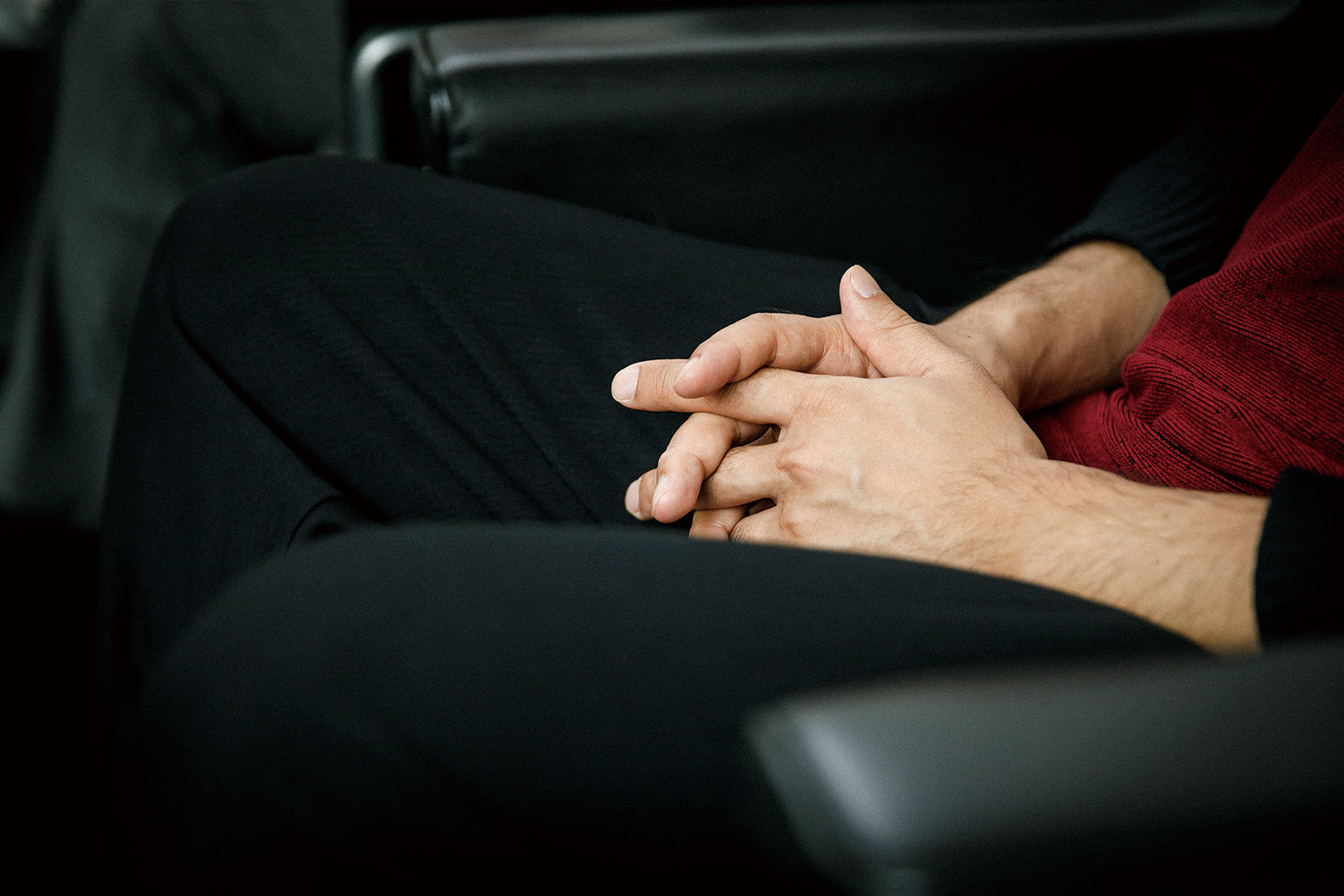
TATENO
Yes, right. Returning to what we talked about earlier, what was it like working with the contractor when you were building the museum?
TANE
In Estonia's case, the project was the national museum. There is a standard policy that buildings larger than 10,000 square meters - both in design and construction - must comply with EU rules stipulating that the tender process must be open to international bidders. Although any company in the European region could submit a proposal, in the end, local companies turned out to be cheaper. And as national museums are often built using tax revenue, or public funds, it was easier to go with a local company.
TATENO
Did things go as you expected they would?
TANE
Um...No… *Laughs.* It was a spectacular site. But pouring concrete in mid-winter when the temperature is minus 20 degrees is absurd. The building site was under construction non-stop for 36 months. Everyone worked at an incredible pace to meet the tight schedule, even though it was the middle of winter. They had to run a heater under the concrete cover sheet to ensure the water wouldn't freeze when pairing the rebar. It’s impressive how concrete is used the same way wherever you go in the world.
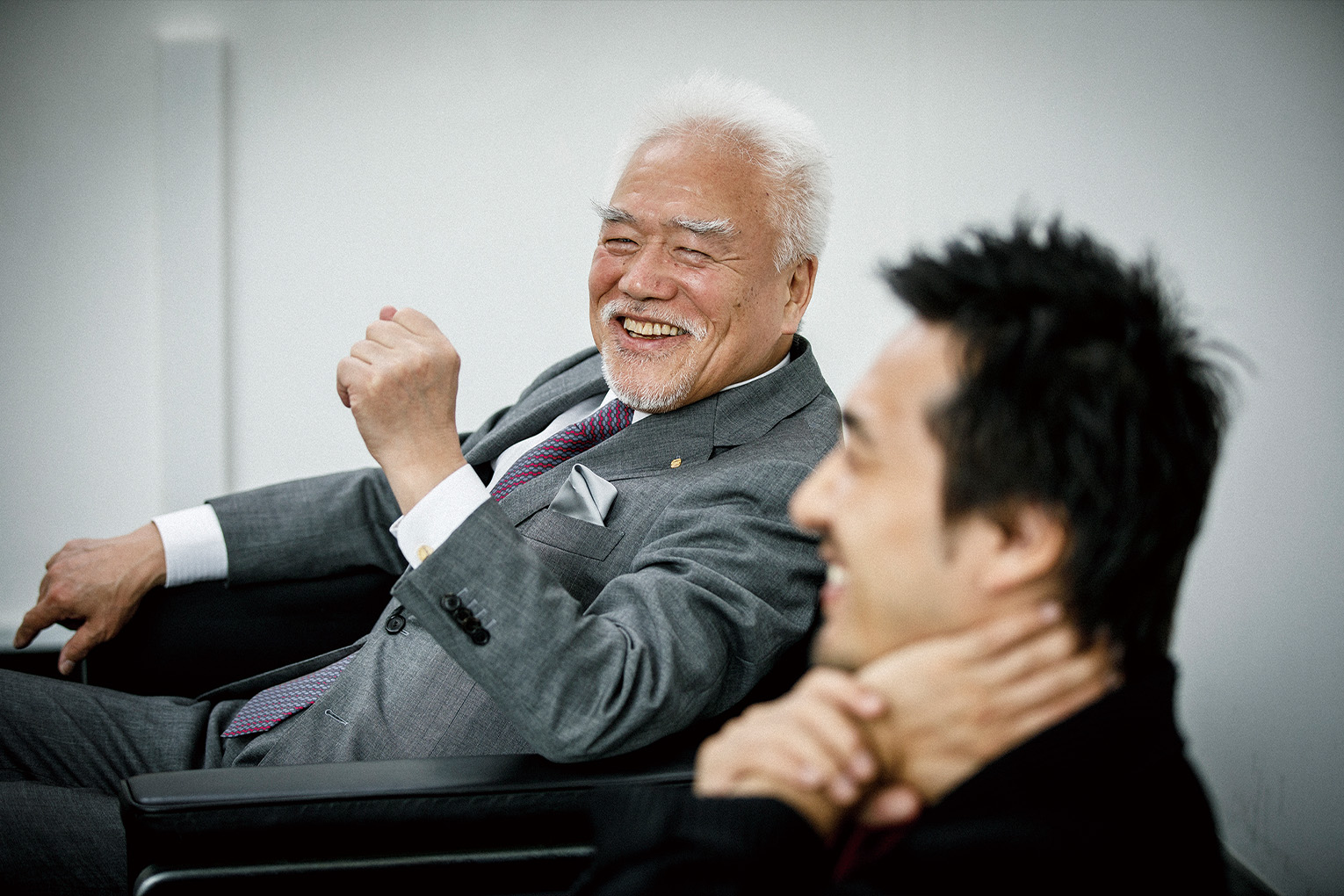
TATENO
Isn’t Europe the least advanced in terms of these types of construction practices?
TANE
Yes, buildings are made through human labor.
TATENO
In Japan, young people are increasingly shying away from the heavy labor of construction sites. Trying to convey the appeal of working construction to younger generations is quite difficult.
TANE
That's true.
Things have changed so much in just 50 years. At this rate, we'll lose elements of our culture passed down for generations up until now. It’s a real problem.
TATENO
You are in Osaka now, but do you have any thoughts on Kyoto's architecture now that you have projects there?
TANE
I have been working on some projects in Kyoto from about four years ago, and every time I pass through, I feel the buildings are a little different than those in other areas in Japan. Even if you are just casually walking around town or near Kyoto Station, you can tell the artisans who constructed the surrounding buildings were incredibly skilled; the lines are so crisp. The columns stand on these elegant lines. So many of the buildings are delicate yet dignified. I think that the quality of Kyoto as a city is exceptional every time I go there. However, the landscape is slowly being covered by more and more big roads, and with each additional thoroughfare I feel the true essence of Kyoto is quietly slipping away. It’s quite a concern. With my Kyoto projects, it's not just about using traditional wooden lattices or awnings to protect the architectural townscape. We make sure to think about how we can in some way preserve the true essence of Kyoto for the next generation.
TATENO
So you look ahead 50 or 100 years when coming up with your plans.
TANE
Yes. I see so many buildings where the architects seem to think as long as they follow the regulations they can do whatever they want. Sure, they'll use Kyoto-esque gimmicks, but I think that's completely missing the point. A city built with the mentality of doing the minimum work to meet protection regulations just feels empty in the end: something's not quite right.
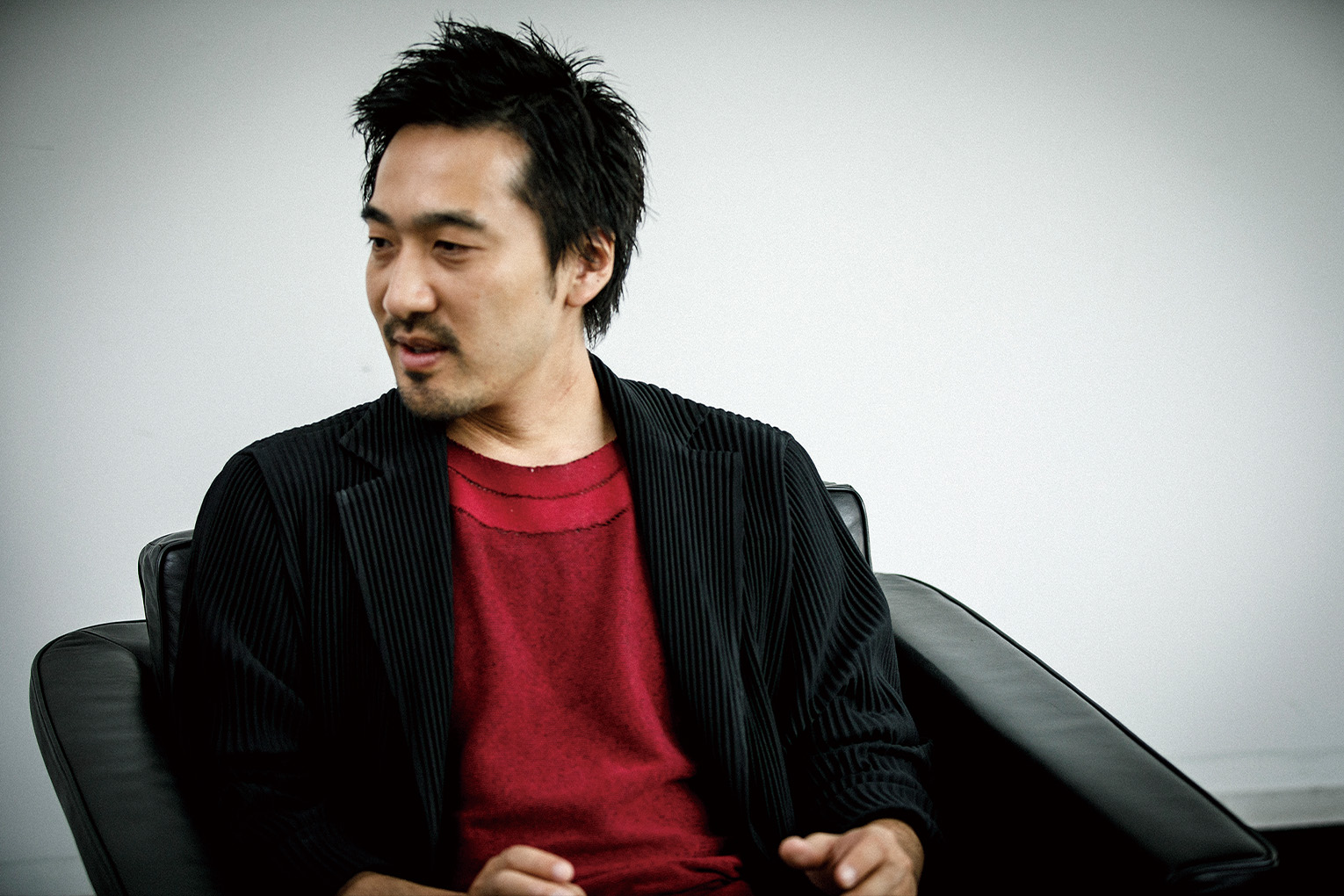
TATENO
Kyoto doesn’t have very strict zoning, urban planning or construction rules, does it? At least, not in comparison to Europe. Nobody makes a fuss if you totally change an exterior.
TANE
In terms of facades, building regulations in Kyoto, and Japan in general, are extremely lax when compared to Europe.
TATENO
That's really true.
TANE
It’s often said that Japanese laws are strict. Things like you can't do this or you can't do that. There are many written laws prohibiting things. Paradoxically, though, this gives rise to new ideas specifically devised to circumnavigate the rules. People start thinking “if this is prohibited, maybe I can do it this way?” or “if I interpret it like this, then that should be possible , right?” Based on these kinds of arguments and lines of reasoning, many proposals get approved. In the case of Europe, however, regulations are typically worded like: "you can change window sizes from this to this" or "you can select tiles from these three colors." This, in effect, is equivalent to saying that anything beyond these defined parameters is totally unacceptable by law. What you are permitted to do is clearly stated, and anything outside of that is generally prohibited, full stop. It’s totally different.
TATENO
This includes the building exteriors as well.
TANE
In Japan, there is something called the Landscape Act, but I think people have a hard time communicating the nuances behind the word “landscape.” Good town planning is, above all, one that achieves unity, by doing things like organizing houses with shared features or similar heights.
TATENO
I recently went to Italy, and there were entire cities that were color-coordinated.
TANE
Right.
They have very distinct features. That sense of unity and local culture is remarkable.
TATENO
Japan used to be more like that.
TANE
Yeah. When you build houses with local materials, it's easy to have a distinct style. Geography also plays a role. Towns in colder places usually make smaller windows or higher awnings.
TATENO
Details like the shapes of the windows change a lot from era to era and place to place.
TANE
I like it when people can make things just slightly unique.
TATENO
Now, the trend in Japan is to destroy anything old. But in comparison, things don't really change much abroad. New York, especially, never seems to change.
TANE
Yeah. I just went to New York last week. New York is so historically important. Its layers of deeply-rooted history remain visible in the city's landscape and skyline today.
TATENO
Just looking at the buildings in New York is interesting. And for us at UNION, given our line of work, it's incredible to see all the beautiful handles and fittings that decorate its buildings.
TANE
Yes, their ironworks industry is superb.
TATENO
The High Line is amazing as well. It was converted from a discontinued New York train line into a park. If it were in Japan, the old line would have been removed right away.
TANE
Yes, most likely. People poured huge amounts of energy into creating the old buildings of the past. It's terrible that they are torn down with so little thought. Every time I come to Japan, I wonder how this practice of tearing down buildings built over such a long history can be so widely tolerated. I think something needs to be done about it.
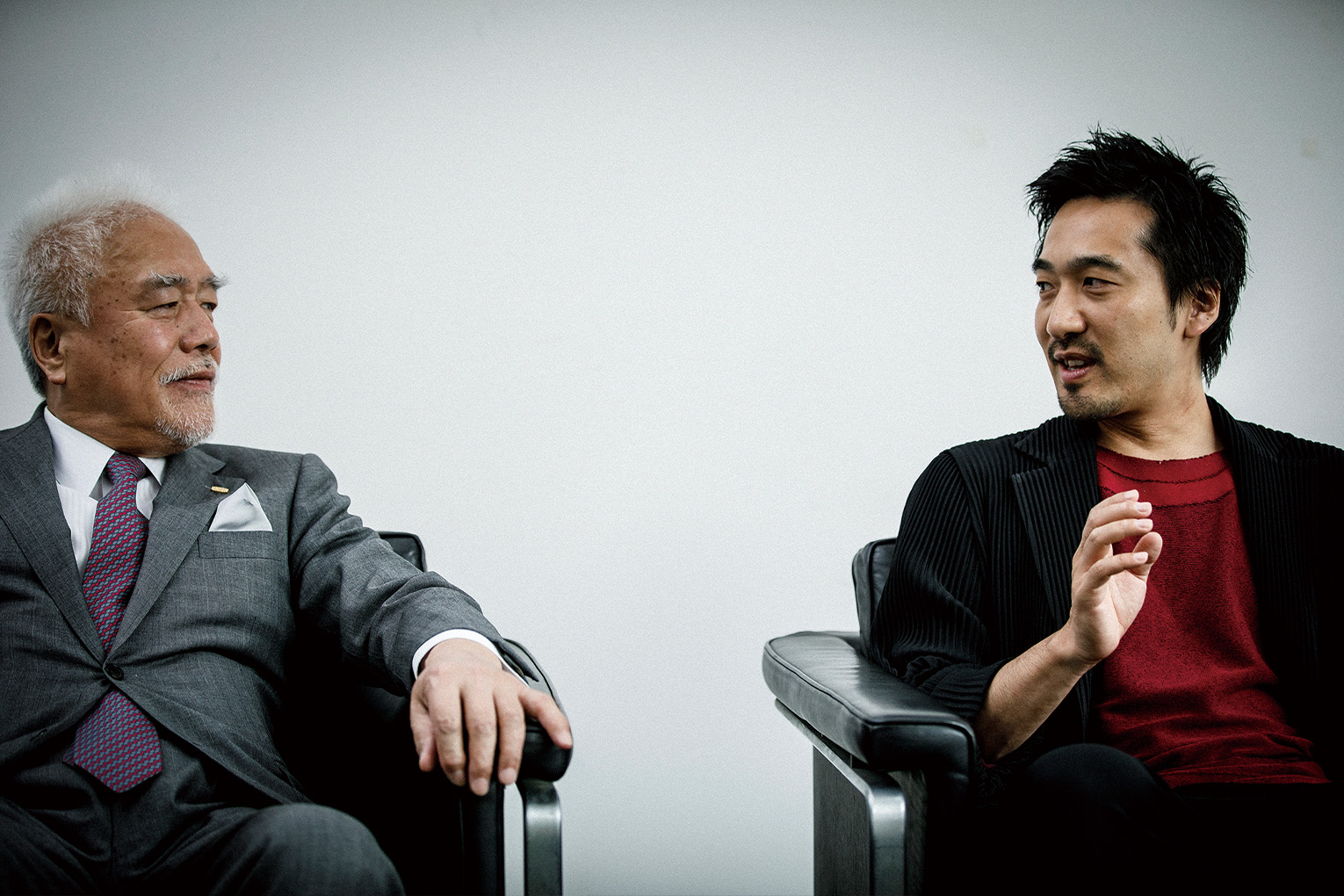
TATENO
On the other hand, we have inherited the architectural traditions found in shrines and temples. We should be trying to make better use of Japan's long heritage of historical buildings.
TANE
I agree. Buildings are not disposable mass-produced products. When properly built, they can be maintained and repaired while still in use. Like most things, they can break or be damaged, but they can be fixed and used again. That's why we have blueprints, and that's why we pass down carefully cultivated techniques over time. Unfortunately, I think we may have forgotten the value of restoring something to its former beauty.
TATENO
A while back, Kumamoto Castle was damaged in a massive earthquake. Witnessing the aftermath of this, I was reminded of the incredible building techniques in the age of the samurai. The parts of the castle that failed to hold up to the quake were the ones maintained and repaired using more modern-day building techniques. The original parts built with tried and tested historical techniques from the samurai era, on the other hand, survived. It seems the technology of that era was exceptional.
TANE
Yes, right.
TATENO
On another topic, I was impressed by the bronze gate you designed for Kyoto’s Shikijuraku. Could you please tell me about the process?
TANE
The Shikijuraku project involved remodeling ten Kyoto-townhouses. I received the request from a group of people managing a local hotel. They had taken over the property to run as a hotel six months prior to the scheduled opening. They repaired the parts they could, but it was still far from being in an acceptable state. First, they contacted me and asked if I would go and have a look, so I went and saw the building in person. The interior had been fixed up decently but certainly not in a way I would have done it. I was telling them it would be extremely difficult to redo everything within such a short time, and they asked, “Well, isn't there anything you can do?” Then, they showed me an alley that ran between the two rows of five townhouses and said, “Can we get you to do this gate?” I thought to myself, "I live all the way in Paris, and you just want the gate?" *Laughs.* But eventually I agreed and began designing the gate. It was supposed to function as a regular front gate, but in Kyoto, household doors were typically emblazoned with the family crest to represent the people living within, so I wondered if I could design a contemporary gate that expressed and adopted this same idea. While I was working on designing the gate, they asked me to design the salon next to the hotel entrance as well. Suddenly, I had a lot of work on my hands.
TATENO
That’s good. *Laughs.* I'm glad you got to do more than just a door.
TANE
Yes *Laughs.* I worked on the salon too. The other rooms were very simple. Kyoto is really more than it appears to be. It’s not just plain or one dimensional; it’s got a bewitching aura like a humid night. And as they were Edo period townhouses, I wanted to bring out the charm of that world.
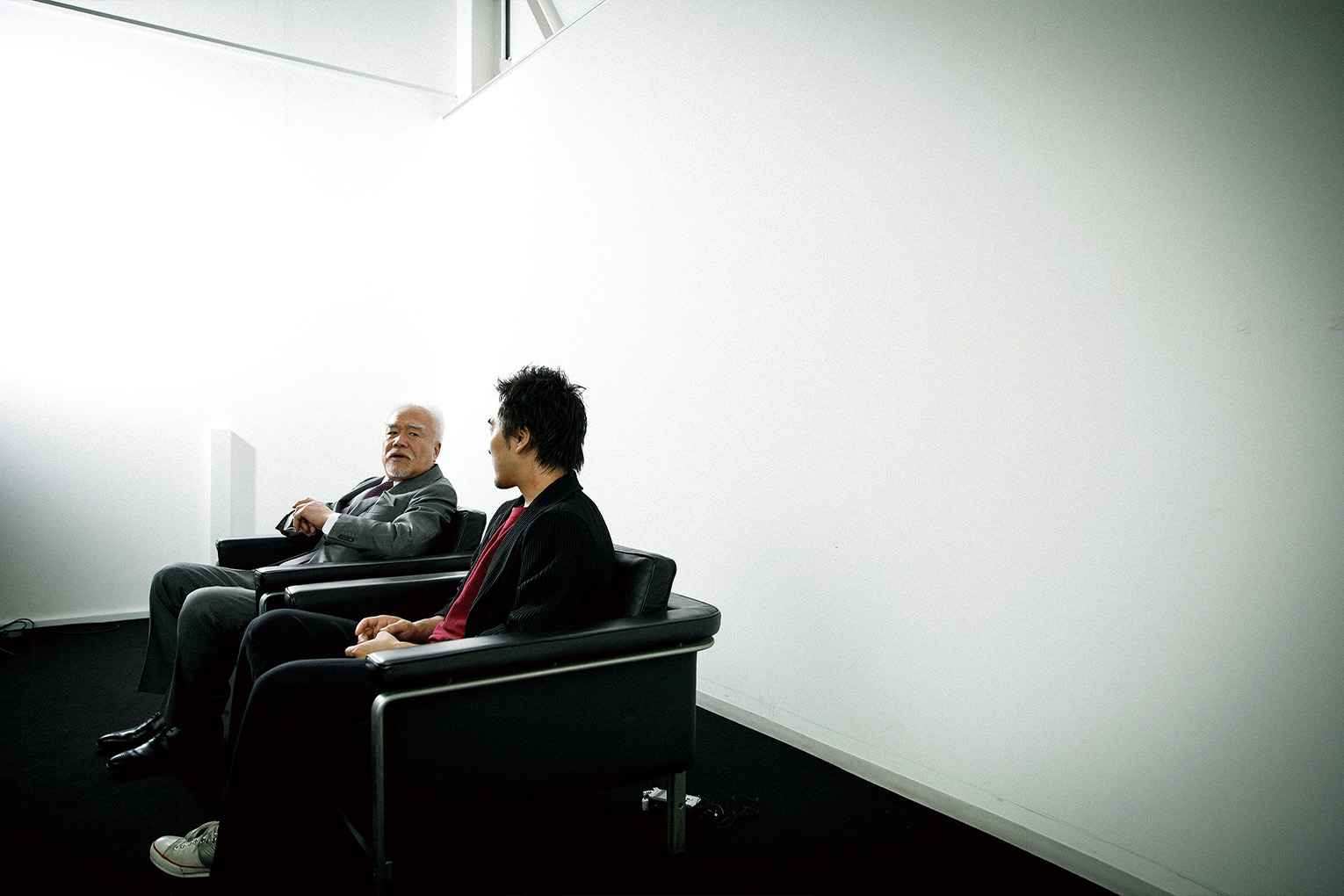
TATENO
People will probably be surprised when they first see it, but I'm sure it will gradually sink in and feel pleasant.
TANE
It seems to actually make people feel quite relaxed. The space is an ancient red color, which in most other settings looks strange, but I stayed there the other night and it was really comfortable. Nothing felt out of place, even when there for a long time. It offers a nice contrast with the garden, giving it a rather mysterious and nuanced atmosphere.
TATENO
Sometimes I think of the Centre Pompidou, and wonder how they could actually build something like that in the middle of Paris. When I think about it now, though, if that wasn't there today, the area would have never become popular.
TANE
I agree. That’s a good characteristic of the French people. Even if a building was harshly criticized when it was built, they will still make proper use of it. It's not a culture that destroys something because it can no longer be used. It’s wonderful to see them using their buildings in this way.
TATENO
Yes, Centre Pompidou may have been that way at first, but it slowly became part of the city. Conversely, if it was torn down, the area would have ended up without any character or defining qualities. Spice is important after all. If something fits in from the very beginning, after a few years have passed it may appear tacky.
TANE
Yes. It can feel like it has been brought in from somewhere else and reconstructed anew.
TATENO
Yes.

TANE
I heard about this famous painter in Paris the other day. Even now, 40 years after the Centre Pompidou's construction, he still told me he would never go there. *Laughs.* I thought "man is this guy stubborn!" Apparently, something had offended him, or maybe it was just too different for his tastes. It was very interesting that someone could have such strong feelings about a building.
TATENO
*Laughs.* Parisians can be quite adventurous when it comes to architecture.
TANE
They are very conservative, but at the same time have an adventurous mentality. It's a culture of extremes.
TATENO
While not an ancient tomb, there are buildings around that are entirely covered in grass. I guess they could be ancient tombs in a sense. Did these come before your proposal?
TANE
Yes. *Laughs.* In the end, good architecture, wherever you find it, enlivens a city.
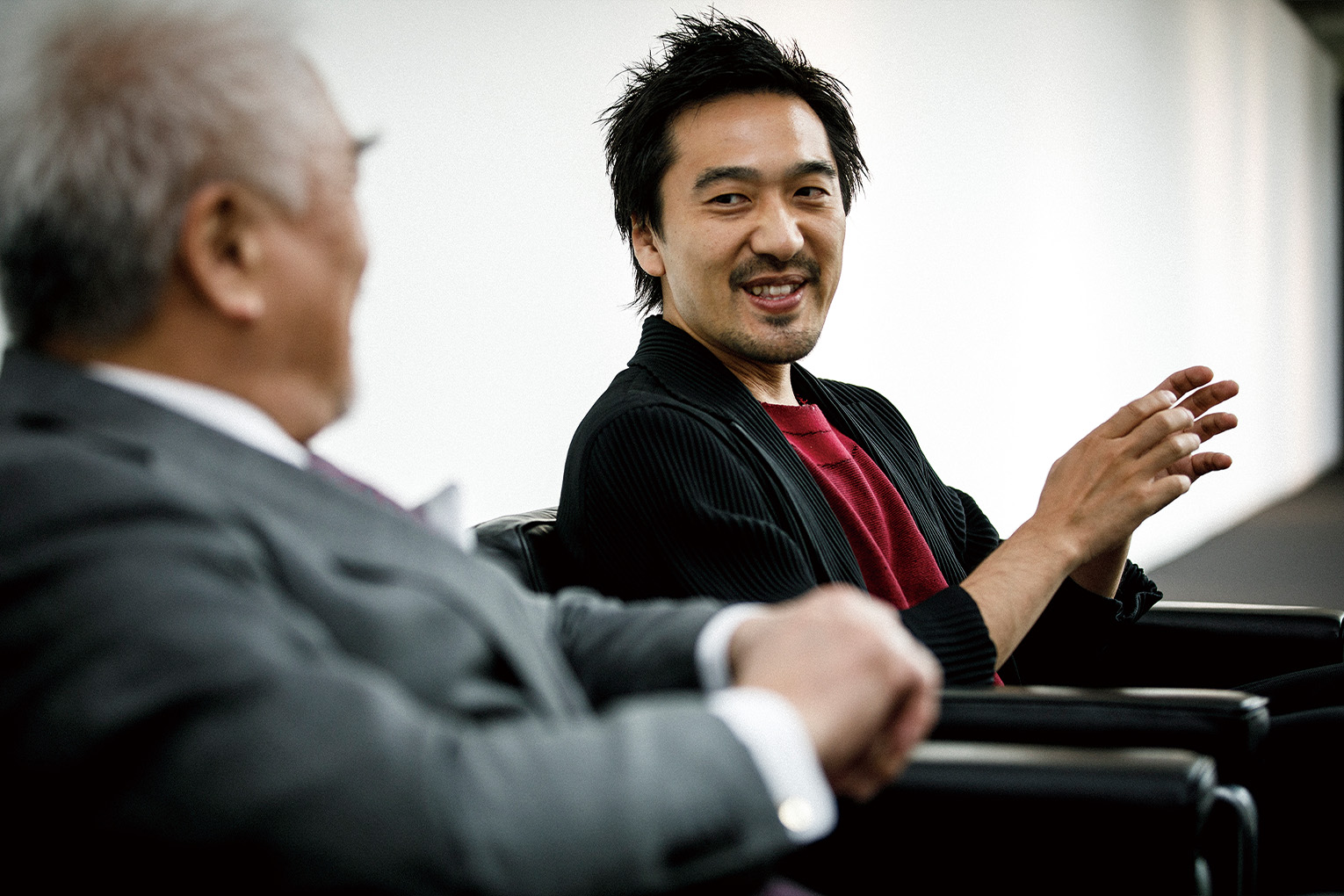
TATENO
That's true. Thanks to the energy our cities have created, we now live in an age where people can connect instantly through technology.
TANE
It's fun to see how buildings interact with the people that use them.
TATENO
Yes. I think if a building has a novel design, it may lead the people inside to think of new and innovative things. New ideas may sprout from our surroundings. The buildings in Silicon Valley are quite interesting, aren't they? I think the architecture there may have helped foster some of their transformative ideas.
TANE
In the case of architecture, I think it's about creating the future - not only finishing the job. It’s about whether in 50, or even 200 years, people will still be using a building. That’s something you don't often see in a job, which is why I strongly believe that, as architects, we need to create the future.
TATENO
Architecture is fun in that way.
TANE
It's interesting, isn’t it? When the museum in Estonia was completed, I heard from the staff working there that, as a national museum, all elementary and junior high school students had to visit it as part of their compulsory education. For the people of Estonia, this was going to be their national museum. When I realized it was something that everyone would come and see I really felt the importance of the project.
TATENO
I'm sure a lot of people came from overseas as well. Not only will it be a great resource for tourism, but it also might stir up something in the hearts of its visitors.
TANE
Yes, people can learn from it and also gain a sense of respect.
TATENO
I hope you keep building such exciting pieces of architecture!
TANE
I think we may have tough times ahead, so it's important that we push forward now.
TATENO
When I was thinking of taking UNION overseas, one idea I came up with was exhibiting at the Milan Furniture Fair for our 60th anniversary. You have previous experience exhibiting there - like with the well-received Citizen exhibit - but if you were to represent UNION, what aspects would you choose to highlight? Sorry to suddenly spring a question like that on you. *Laughs.*
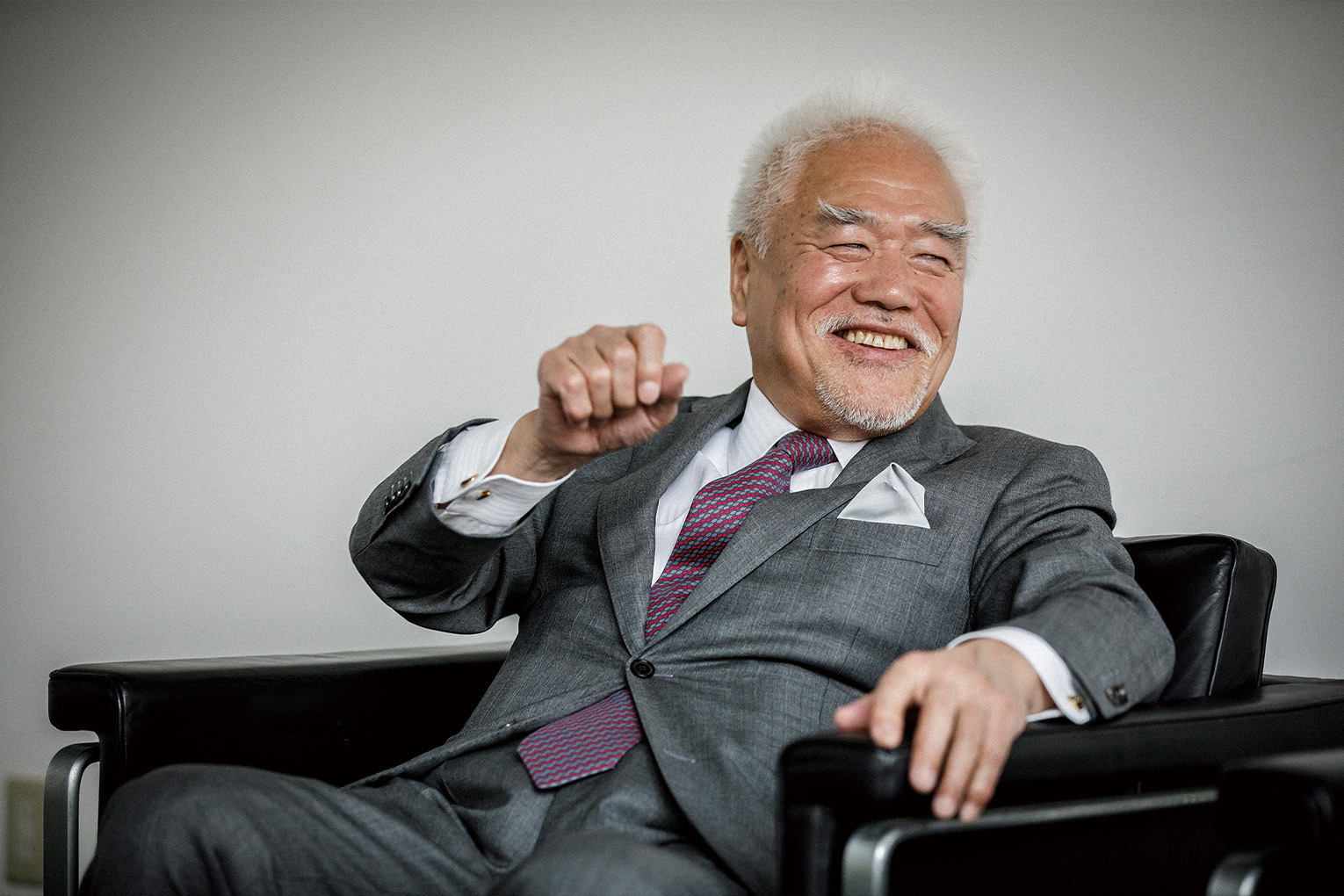
TANE
*Laughs.* I’m not really an expert in the area, but when looking at Japanese manufacturers from an outside perspective, it can be difficult to tell what they want to communicate to the viewer.
TATENO
Really? Why is that?
TANE
Well, whether for good or for bad, many things manufactured in Japan look rather ordinary. European manufacturers, on the other hand, tend to focus on producing small quantities over mass production in order to clearly demonstrate the unique craftsmanship of their products. They try to make products that reflect their identity. This makes it very easy to understand what they want to communicate. Although Japanese manufactured products look normal on a superficial level, the technology beneath is exceptional, and things such as quality control are extremely well enforced. I think Japanese cars exemplify this best. They're always reliable and dependable and widely accepted around the world because of their quality. It’s important to think about how to convey that, but it's extremely difficult.

TATENO
In that sense, UNION needs to make a product that expresses the essence of what we have been for the past 50 or 60 years, and is easily understood. If we just display a whole line of products, people won’t really understand what UNION is about. This time around it would be better to focus on products that clearly show who we are.
TANE
Yes, it’s best to explicitly convey what UNION does.
TATENO
I agree.
We last exhibited there about 10 years ago.
When I think about it now, it sort of failed in a sense. At the time, it generated a lot of attention, but nothing really came of it. It was even picked up by a newspaper or something like that, but somehow failed to garner interest from there. I think we have to generate some deeper and longer lasting interest in our products this time around.
TANE
This may be the European perspective, but you shouldn't get too caught up in trying to communicate everything the first time around. Your message is something that you have to keep working to get across before it eventually gets heard. I think it’s a little optimistic to think people will understand you completely after just one or two exhibitions. Keep telling them over and over about what your products can do. Something flashy can create a lot of buzz, but in the end, it takes time to convey the value of something.
TATENO
So to some extent, you have to think about a long-term strategy.
It’s probably a silly question, but do you think about causing a stir when thinking up your projects?
TANE
I didn't when I worked on the Citizen exhibit. When you too hard, it becomes easily evident even to outsiders. We're impressed when we see an exhibit by someone who is really earnest in their work. With Citizen, I thought about conveying many different things. They created a new technology for converting light into time in one of their new watches. Citizen developed something like a solar panel that took various spectrums of light and combined it with a battery to keep time. To convey this process, I heard a German working with them named the technology eco-drive. But the name alone was not enough to get their idea across. The concept of turning light into time is very poetic. This may sound a little philosophical, but I thought "what if time is light?" May be somewhere in the vast universe tens of thousands of light years away, time and light coexist in an inextricable bond, complimenting and defining each other. May be time is light, and light is time. From this, I derived the slogan “light is time” to convey this phenomenon.
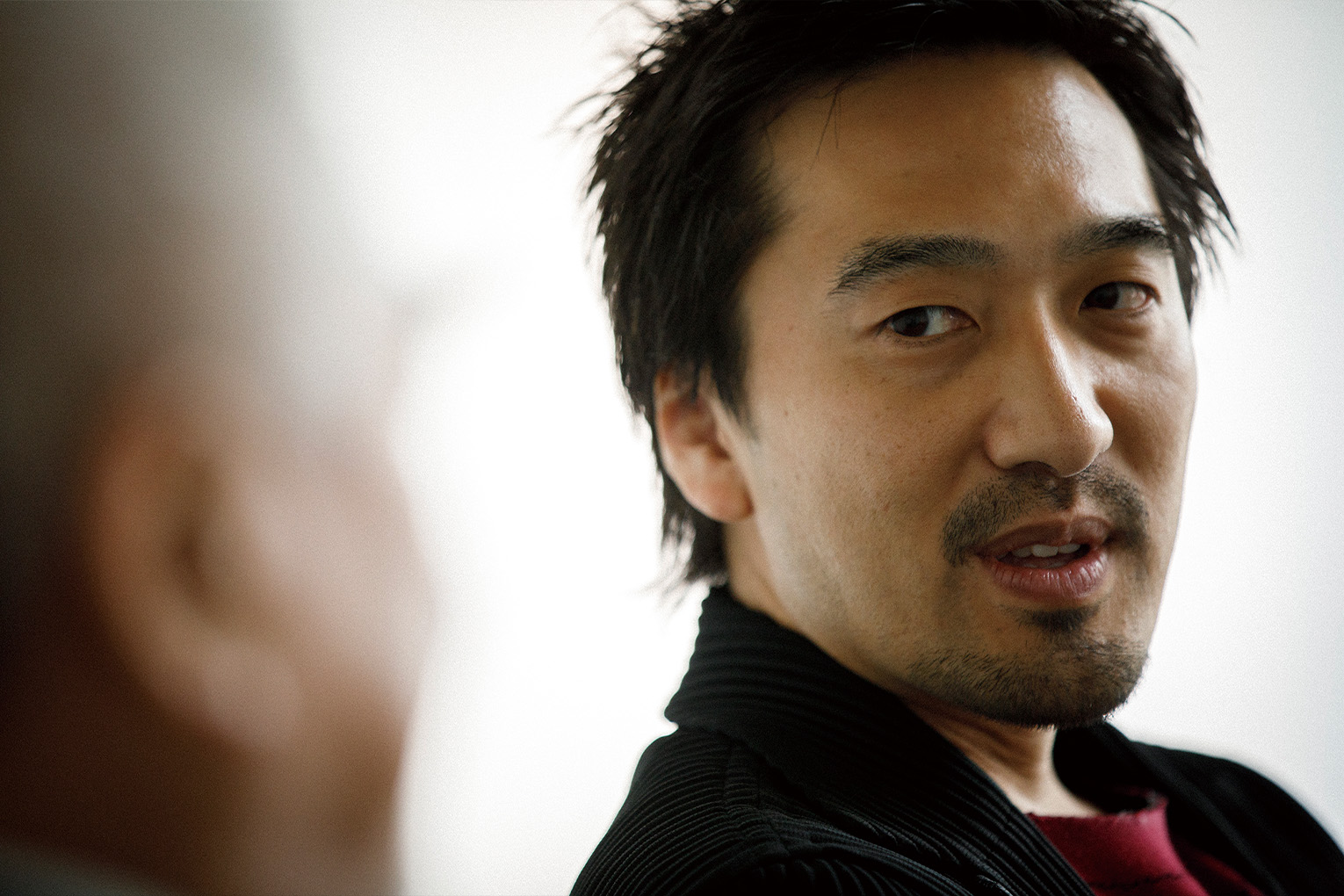
TATENO
What an interesting way to draw inspiration for a concept.
Is your technique to start by exploring the fundamental roots of a subject and trace this back to a single idea or motif?
TANE
Rather than providing some sort of output immediately after receiving a job, I think it's important to take the time to formulate a plan by opening a dialogue and beginning preparations with the client. We use what is called the archeological research method and keep looking further and further into the past from our current starting point. For example, in the case of UNION, we could ask, "In what age was the door handle first required, and who invented it?" We would then trace our way back to the handle's very beginnings and deduce that, given its origins, it’s likely the door would have preceded the handle. If you investigated when the door handle became a convenient tool for opening and closing doors and uncovered who crafted the first door handle, you would likely end up somewhere in ancient Mesopotamia. Most of the things we have today were originally created in some form by the Mesopotamian civilization. Once you made that connection, it would be interesting to incorporate those ancient ideas into a door handle made for the modern world. The next part of our journey might then lead us to the key... You continue exploring down new branches of thought, step by step. From that panoptic viewpoint, it becomes exciting to think about what you want to convey to people today and how you want to convey it.
TATENO
I've never thought about it that way! *Laughs.*
I can see you like archeological methods. Was the ancient tomb proposal also based on that method?
TANE
When thinking about the future of modern architectural structures, I am always reminded of their transience. Take the National Stadium for example, it has only been around for about 50 years and is already being torn down. Even with all the effort spent building it, it was only kept standing for 50 years. I've realized that is what modern architecture has become. When the National Stadium was built, the focus was on building great architecture, something unique to that place. Or it was on the architect who built it. I think architecture gives people the power to express something they hold true, but this is becoming difficult to do with modern architecture. All that is conveyed is the name of the famous person who designed it, nothing more. This is why I think that the archeological approach may make it possible to move beyond this.
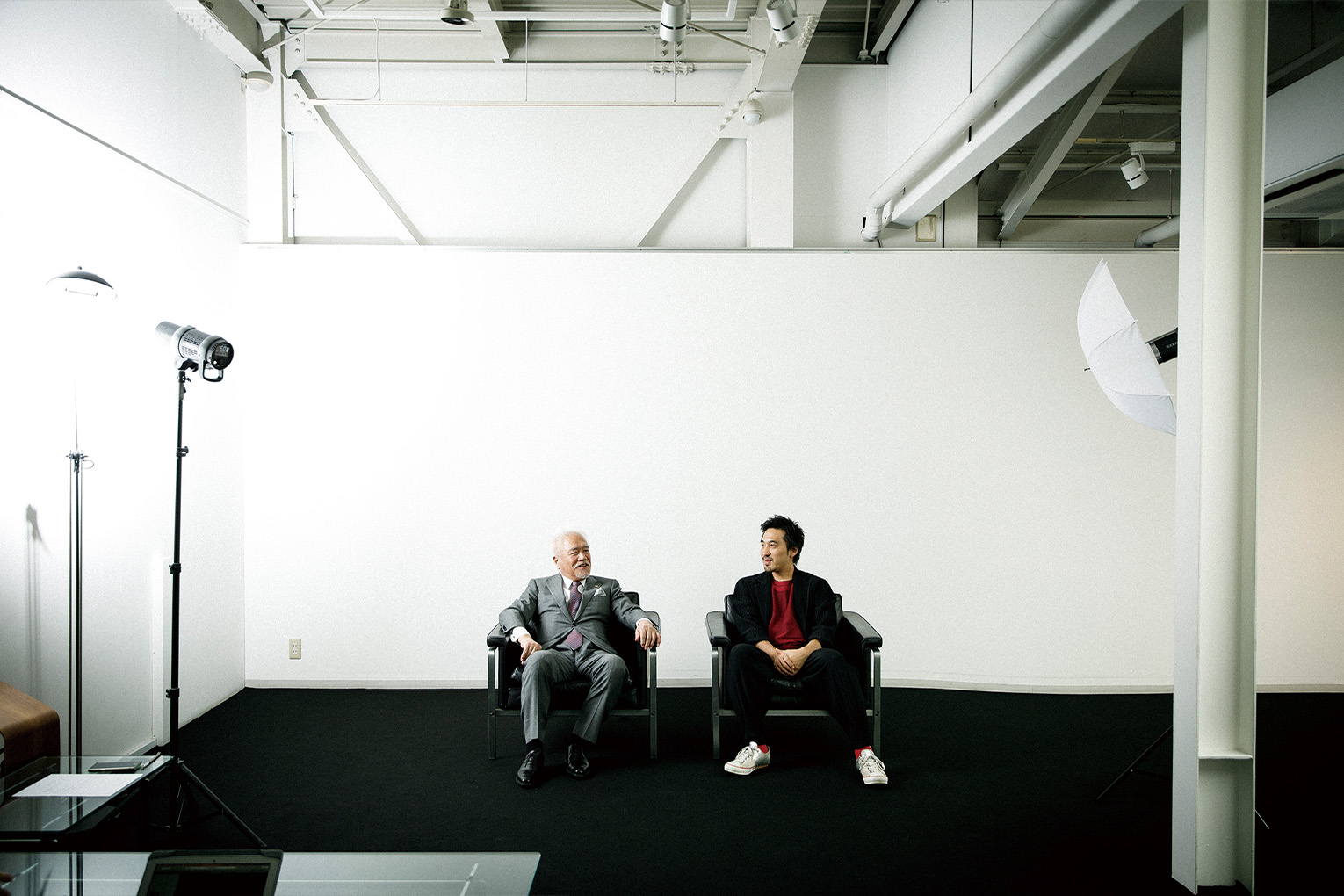
TATENO
Are you also concerned with materials?
TANE
Yes, I really care about materials.
TATENO
Do you go and check them out firsthand?
TANE
I believe originality is the essence of architecture, and building in a way that reflects the unique characteristics of a place is very important to me. It’s not an off-the-shelf product. For example, the first house I worked on in Japan was a small private home with a limited budget. It was located in Oiso, which lies between the ocean and mountains in Kanagawa Prefecture. After some research, I learned that an ancient site of the Jomon people was found in that area. It seems the Jomon had lived there because it offered an easy place to subside. This exceptional location had been home to people from the Jomon period down through the Yayoi period and all the way to the present day. Since ancient times, Japanese spent their waking hours in an area called the ima or living space and slept in a room called the nema. I adopted aspects from the pit dwelling abodes of the Jomon period and the stilt dwelling houses of the Yayoi period into my design for the house. By just making the floor 60 cm lower than the ground, pit-dwelling houses are able to stay warmer in the winter and cooler in the summer. After digging out a pit to recreate this, I used the soil leftover to make the earthen walls and floor. And as Japan is very humid, I made the second floor out of wood with a raised construction to give it a high tolerance to moisture. This lets the inhabitants live with the earth on the first floor, while providing something like a well-ventilated wooden cave on the second. I guess if I were the clients, I might say, “Hey, we aren't living in prehistoric times anymore!” *Laughs.*
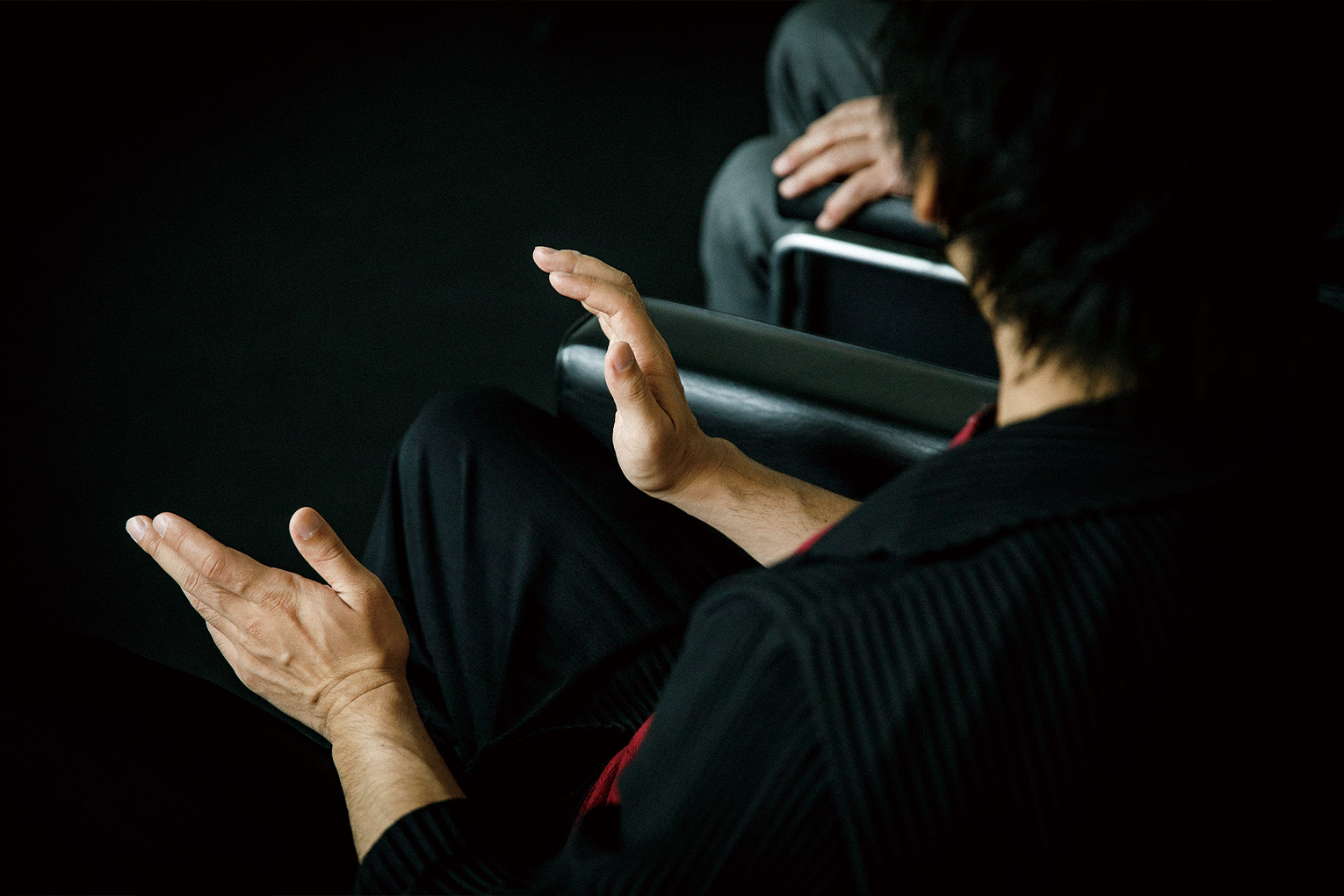
TATENO
*Laughs.* Are they still happy with the house?
TANE
Their request was "to make me a house that will last for 100 years." They wanted a house that the next generation of children, and the one after that could carry on using even after they were gone. They decided to live in Oiso and thought it was a great place to stay. I can tell you it really is a good place to live.
TATENO
It would be fun if the children grow up there, and continue to use it for another 100 years after that.
TANE
Yes, I will be very happy if that happens.
*Interview concludes*
Both
Thank you.
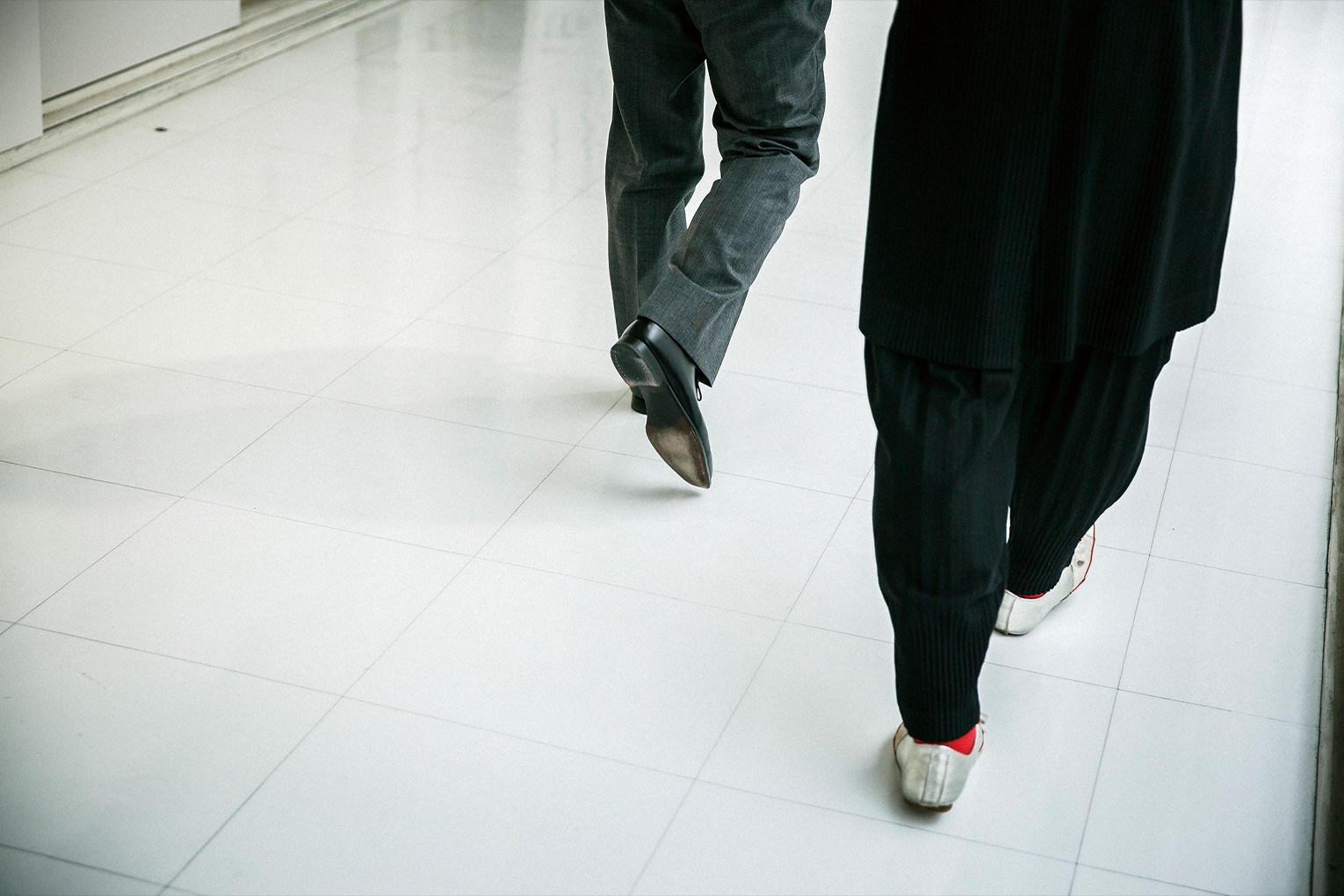
Planning: Naoyuki Miyamoto, Keigo Kuwano
Photography: Norinao Miyanishi
Reporting and writing: Keigo Kuwano